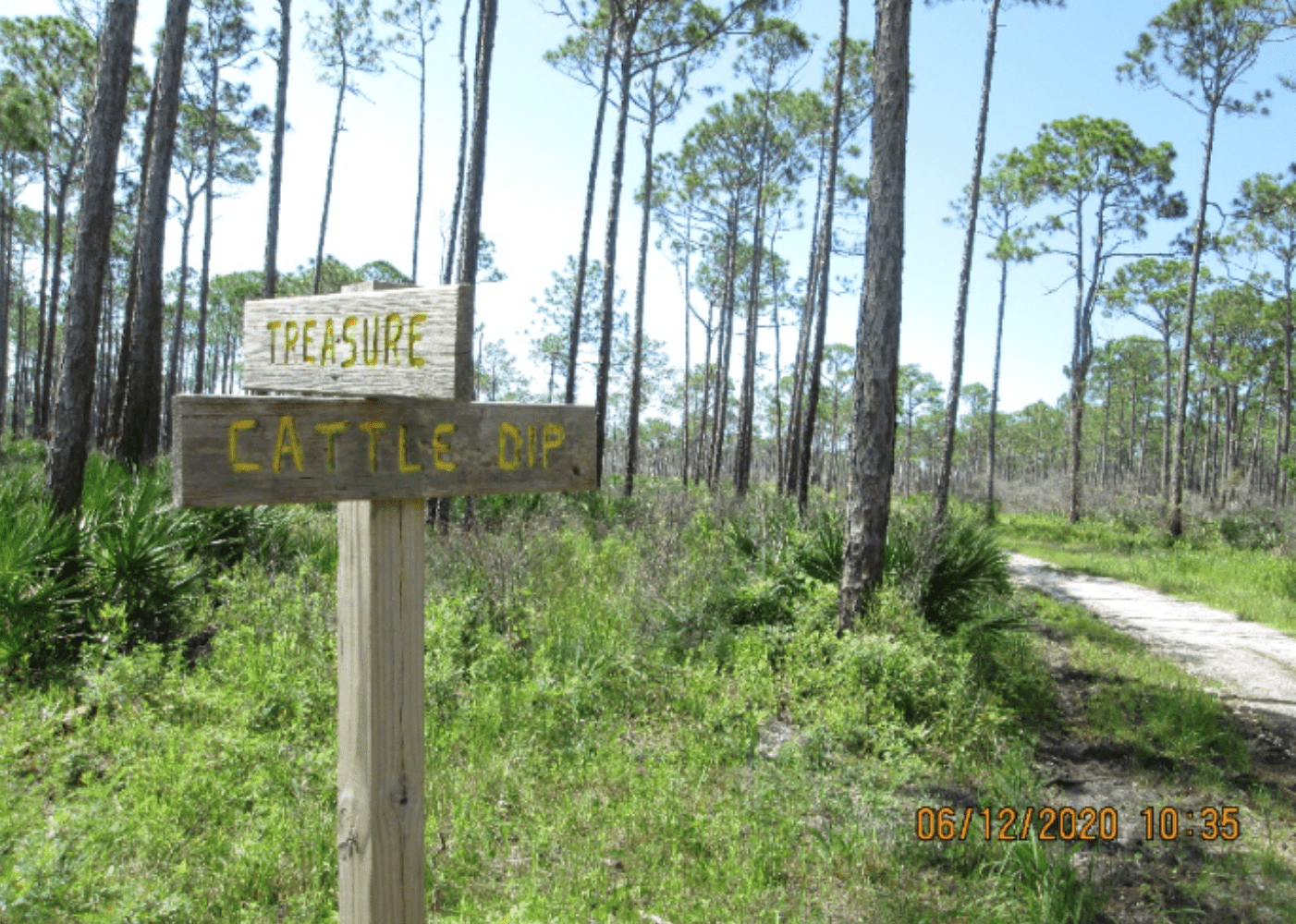Explore the Cattle Dip Road trail for a glimpse at local history
This article is the second in a series exploring the many trails within the St. Joseph Bay State Buffer Preserve. To read the first article, click here.
So, you’ve explored Treasure Road and now you are ready to branch out? Are you going left or right first?
Cattle Dip and North Spur Trails start about .25 miles from the main gate of the St. Joseph Bay State Buffer Preserve.
Let’s go right first and explore Cattle Dip Road.
You may already know or can guess why it’s named Cattle Dip. Cattle dips were put in all over the South to help fight the battle against the cattle tick, or Texas Tick Fever.
Cattle herding in Florida has been important from the times the earliest Spaniards brought the beasts in the 16th century, reports Dr. Nancy White from the University of South Florida.
By the mid-1800s, Florida’s herd numbered over a half-million, and the industry was important in shaping the culture and character of the state. But there were always problems, and the early 20th century’s biggest one was the tick. The tick caused a fever and a decrease in red blood cell count that reduced the quality of the beef, and tick bites damaged the hides.
Cattle was shipped by rail to the slaughterhouses in the northern states. Cattle in the south developed a tolerance to the fever and only suffered low-weight and poor-quality hides. As cattle was being shipped to the north, herds were contacting the fever and dying.
Due to this development southern cattle were prohibited from being shipped to the north. When the southern ranchers suffered severe economic times, they turned to the Federal government for help. That is when and how the cattle tick eradication program began.
The solution to this problem was to require that cattle be dipped in a solution containing arsenic and other ingredients. From 1906 to 1961, any cattle being shipped out-of-state was required to be dipped every 14 days. This proved to be cost prohibitive for many ranchers.
The United States Department of Agriculture determined the specifications for the vats. These vats were 25 to 30 feet in length and 2.5 to 3.5 feet in width. They were seven feet deep so the cows could be forced in, then run out. Most often they were made by pouring concrete, and they sometimes had wooden railings around the perimeter of the vat.
Cattle were herded into the vat, which had a drop-off at one end, sometimes deep. Once they entered, they could not back out. There would be a concrete dripping pad at the exit end of the vat. The dipped cattle were then put into pens where they could be inspected. If ticks were found, they were removed or wiped with the dip.
White and a group of her students did extensive research at the Buffer Preserve in early 2005. From the research, archaeologists have looked at cattle dipping sites to learn about the culture of people raising cattle in early Florida. These sites seemed to serve as centers for social activity in the 1930s and 40s, since these dispersed ranchers would gather at these sites.
Neighbors to those having cattle dips could share and would make it a social gathering of sorts while they dipped their cattle. Artifacts recovered near these sites attest to this fact.
Today there is no evidence left of any vat on Cattle Dip Road. What you will see are beautiful long-leaf pines, native flowering plants and titi, along with other species. You will see where staff of the Buffer Preserve have conducted prescribed burns on both sides of the road. Palmettos, felled trees and native flowers are blooming at different times of the year so it’s good to take your walk in different seasons.
If you walk the entire trail, you will have gone about 1¾ miles. Don’t forget your water, hat and sunscreen! There is some shade on Cattle Dip. Enjoy!


Meet the Editor
David Adlerstein, The Apalachicola Times’ digital editor, started with the news outlet in January 2002 as a reporter.
Prior to then, David Adlerstein began as a newspaperman with a small Boston weekly, after graduating magna cum laude from Brandeis University in Waltham, Massachusetts. He later edited the weekly Bellville Times, and as business reporter for the daily Marion Star, both not far from his hometown of Columbus, Ohio.
In 1995, he moved to South Florida, and worked as a business reporter and editor of Medical Business newspaper. In Jan. 2002, he began with the Apalachicola Times, first as reporter and later as editor, and in Oct. 2020, also began editing the Port St. Joe Star.